If you live in an area that often deals with snow and ice-covered roads, winter tires are a must. Knowing when to replace winter tires is important. Snow and ice make maintaining traction difficult and tread depth is critical to maintaining a better grip in slushy conditions.
Winter Tire Tread Depth
Most states require only 2/32″ of tread depth, even for winter tires.However, we strongly recommend 5/32″ of tread depth or more for adequate snow traction.
We also recommend 4/32″ for safe driving in wet conditions.
A difference of1/32″ or 2/32″ of your tire’s tread depth can make a big difference in how much grip your tread pattern has on winter roads. Larger grooves in your tread design provide more traction by channeling water, snow, and slush out from underneath and away from your tire’s contact patch.
Let’s take a closer look
Tire Tread Depth ChartThe overall thickness of your tire tread is going to help your car’s performance, gas mileage, stopping distance, and acceleration. The bigger factors are the pattern and size of your tread, but the depth still matters a lot.
As you drive along, your tires are going to lose a little bit of their overall tire tread depth. Over time, enough depth is lost, and your tires become unsafe to use.
In winter, you have added road hazards like salt, snow, and ice. All three of these hurt your tire’s grip with the road underneath it. As an added precaution, you should plan on having extra tread depth on your tires during the winter to combat the worsened friction of the road.
Whether you have all-season tires or winter tires, you should consider changing them if they have less than 5/32” tread. We suggest checking the tread near the middle of Fall, so you have enough time to prepare for winter.
Even if your tires perform okay with 2/32” of tread in the summertime, the winter is a lot more dangerous, so it’s wise to swap them before the first snowfall or round of ice.Tire Tread Life Expectancy Chart
When it comes to driving on snow, things get more dangerous.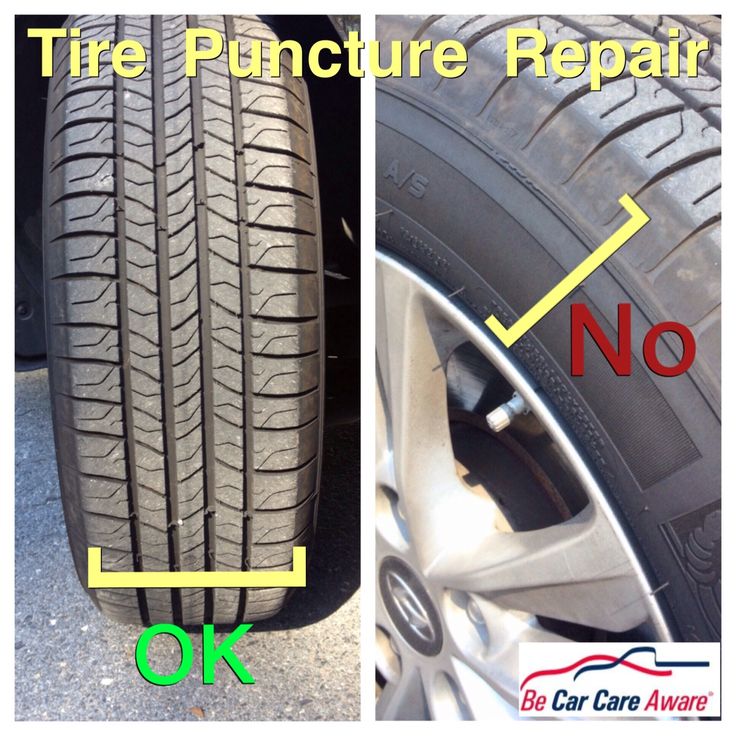 As a result, you’ll need deeper tread depths to safely drive.
As a result, you’ll need deeper tread depths to safely drive.
While most states don’t have a legal minimum tread depth for winter tires that is different than the depth for all-season or summer tires, we recommend maintaining 5/32″ or more of tread depth.
There are three major issues with driving on snow:
With all of these factors in mind, it seems logical that you should have even thicker treads for drives through the snow. We suggest keeping at least 4/32” of tread if you want to drive through the snow. The safest option is to avoid driving whenever it’s snowy or icy outside, but we understand there are some unavoidable scenarios that come up.Snow-Covered Road
We suggest keeping at least 4/32” of tread if you want to drive through the snow. The safest option is to avoid driving whenever it’s snowy or icy outside, but we understand there are some unavoidable scenarios that come up.Snow-Covered Road
You should replace your snow tires if you have 5/32” of tread or less. You’ll notice that this is much thicker than the requirement for standard tires, which says that standard tires should be replaced when they have 2/32” of tread.
Snow tires or winter tires are designed specifically for driving through snowy roads in the wintertime. You’ll see them a lot in the cold Northeast of America.
Since tread depth plays a large part in stopping distance, performance, and safety on snow-covered roads, you’ll want to make sure your snow tires have plenty of tread depth remaining.
The reason behind that decision is that drivers expect their winter tires to give them even more grip through poor road conditions.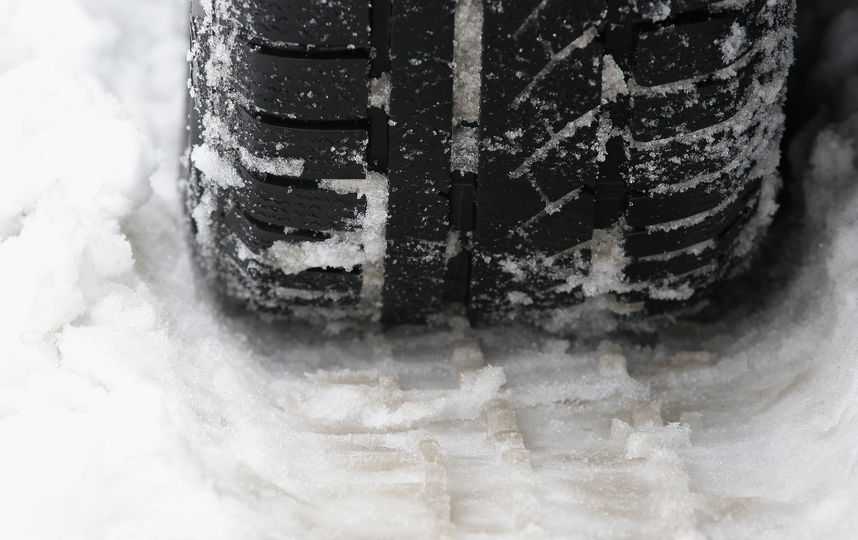 If you drive winter tires that only have 2/32” of tread, you’ll be much more likely to lose control on a snowy road. The extra bit of tire tread makes a huge difference.
If you drive winter tires that only have 2/32” of tread, you’ll be much more likely to lose control on a snowy road. The extra bit of tire tread makes a huge difference.
In theory, winter tires will last just as long as standard tires, under the same conditions. In other words, if you’re always driving on winter tires, they’ll last until they’ve reached 6 years or about 40,000 miles.
It’s possible that you won’t put 40,000 miles on a set of snow tires that you only use for part of the year. You’re probably only using them for 4 to 5 months of the year, and they’re otherwise sitting in storage. For that reason, we suggest that you count the age of the tires, not the total mileage. Tires will start to dry rot and degrade after 6 years.
It’s also important to store your tires correctly. If you just throw them in your yard between uses, they’ll rot much faster and their life expectancy will go down. Ideally, they should be bagged, stood up, and stored out of the sunlight.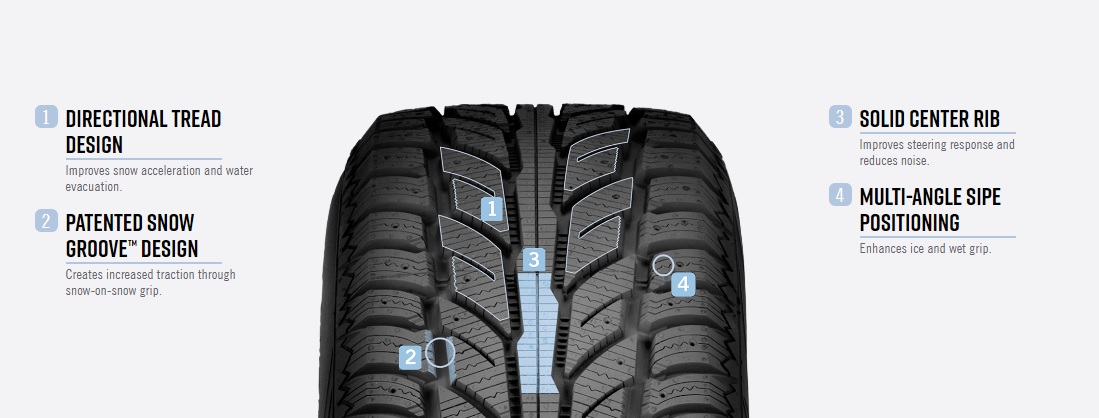
You should also check the remaining tread depth before putting snow tires back on your car or truck. Once your tire wear reaches 4/32″ you should replace them. If they’ve worn down to the legal limit which is 2/32″ in most states, you must replace your tires.
New winter tires typically have the same thickness of tread that standard tires have. If the tread gets too thick, then the tire might not fit in the wheel well or it won’t fit on the properly-sized wheels.
New winter tires tend to have around 11/32” of overall tread depth. For reference, they don’t need to be replaced until they hit 4/32” to 5/32”, so there’s a huge amount of usable tread there.
There are a few conditions that might cause you to replace your winter tires.
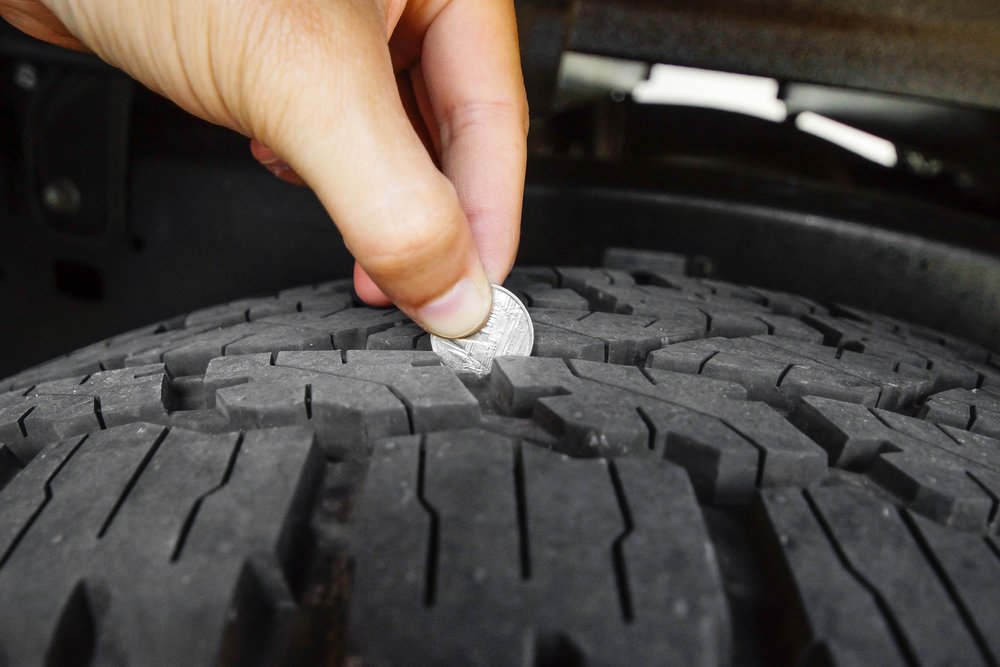 That’s when the rubber naturally degrades and your tires become unsafe. This is important to understand for tires that aren’t used year-round. Check your tire wall for text that says “DOT” and read the four-digit code at the end of that text. The first two digits are the week number of fabrication, and the last two digits are the year number. 3122 means it was made on the 31st week of the 2022nd year.
That’s when the rubber naturally degrades and your tires become unsafe. This is important to understand for tires that aren’t used year-round. Check your tire wall for text that says “DOT” and read the four-digit code at the end of that text. The first two digits are the week number of fabrication, and the last two digits are the year number. 3122 means it was made on the 31st week of the 2022nd year. Any amount of tire damage can lead to a blowout or uneven wearing. Either of these conditions is very unsafe, so you should replace your tires immediately. If you see a puncture, sidewall bulging, or any bubbling or cracking, then take your tires to an expert for an immediate replacement.
Any amount of tire damage can lead to a blowout or uneven wearing. Either of these conditions is very unsafe, so you should replace your tires immediately. If you see a puncture, sidewall bulging, or any bubbling or cracking, then take your tires to an expert for an immediate replacement.As long as all three of these conditions are met, you should be okay to keep driving your winter tires. If you’re not sure how many miles you drove on these specific tires, that’s okay. The tread depth will tell you everything you need to know. When the treads are too shallow, it’s a result of driving a lot of miles and having the rubber wear out through use.
Winter tires provide good performance by using softer rubber compounds. The soft rubber remains flexible to provide better traction in cold temperatures and icy conditions. Due to this fact, however, snow tires will not achieve the same amount of mileage as traditional all-season tires.
There are a lot of winter tires that are designed to do different things, but which option is the longest-lasting? According to our experts, it’s the Michelin X-Ice Snow. This option lasted a lot longer while still safely providing the ability to drive through snowy and salted roads.
The Michelin X-Ice Snow tires have a mileage warranty of 40,000 miles and are backed up by very high marks from customers for their treadwear.
Below are some links you may find helpful when learning about tires
All tires work best when they have more tread depth. This is especially true for winter tires and all-season tires that are used on snow and ice-covered roads.
While the legal minimum tread depth in most states allows 2/32″ of tread wear, this is risky when the road surface becomes wet, on packed snow, or in icy conditions. Even all-wheel drive or four-wheel drive vehicles will struggle to maintain traction if the tires aren’t up to the task.
Even all-wheel drive or four-wheel drive vehicles will struggle to maintain traction if the tires aren’t up to the task.
We strongly recommend purchasing new tires for winter months when you have reached 5/32″ of remaining tread depth. There’s a big difference in performance for every 1/32″ your tread blocks wear beyond this point.
Good luck and happy motoring.
Will Creech
Will has been an automotive enthusiast since he was old enough to make engine sounds. Formerly a member of the contract training team at Discount Tire, he is unusually knowledgeable on all things related to tires. He is now the owner of and main contributor to TireGrades.com.
By Tom Krishner, The Associated Press
It’s time to get some traction.
At any time now, snow could fall over a broad swath of America, and that means your tires need to be checked.
Experts say if the rubber is worn, you could slide, crash or get stuck, even in a light snowfall.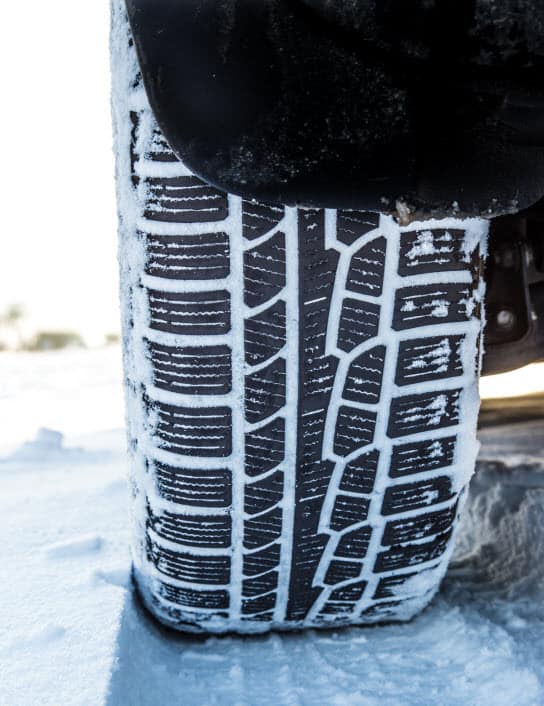 Depending on where you live and how badly you need to get someplace in bad weather, you might want winter tires. All-season tires might be an option, but they won’t start and stop as well in ice and snow.
Depending on where you live and how badly you need to get someplace in bad weather, you might want winter tires. All-season tires might be an option, but they won’t start and stop as well in ice and snow.
Experts say late October is a good time to shop for tires and get them installed so you’re ready. Here’s how to figure out whether you need new tires and tips from experts on what kind of rubber to buy:
Check the tread depth: Stick a quarter into the tire grooves at several spots with George Washington’s head upside down. If you can see the top of Washington’s hair, you have 4/32 of an inch of tread or less. That means it’s about time to replace your tires. You may have a little time left in warm, dry weather, but tires with less than 4/32 won’t grip well in ice and snow. People used to use a penny to check tread depth. But if the top of Abraham Lincoln’s head can be seen, that means you’ve only got 2/32 inches of tread left. “At that point most tires are basically worn out and need to be replaced immediately,” says Gene Petersen, tire program manager for Consumer Reports, which does extensive tire testing.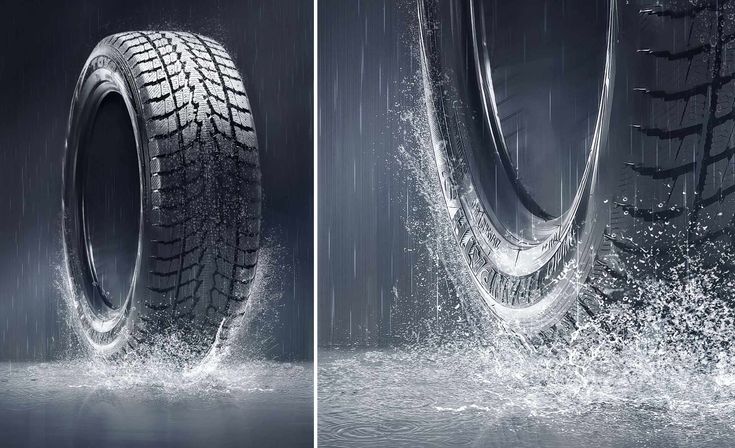
Winter or all-season? It depends on where you live, how urgently you need to be somewhere in the snow, and whether your vehicle is 2-wheel-drive or all-wheel-drive. In an area with moderate snowfall, you probably can get by with all-season tires, especially if you can wait for plows to clear roads before going anywhere. Generally, if you live south of Cincinnati, Ohio, then all-season tires should work, says Woody Rogers, director of tire information for Tire Rack, an online tire store in South Bend, Ind. But to the north, where heavy snowfall is more likely, winter tires will be better. If the engine powers all four of your wheels, good all-season tires may suffice. Generally, winter tires on a two-wheel-drive vehicle grip better than all-season tires on a four-wheel-drive vehicle. Experts say all-wheel-drive makes a big difference starting off in snow. But it won’t help you stop in snow. That’s where winter tires come in. They’ll stop faster in slippery conditions because they grip ice and snow better due to specially designed soft tread compounds.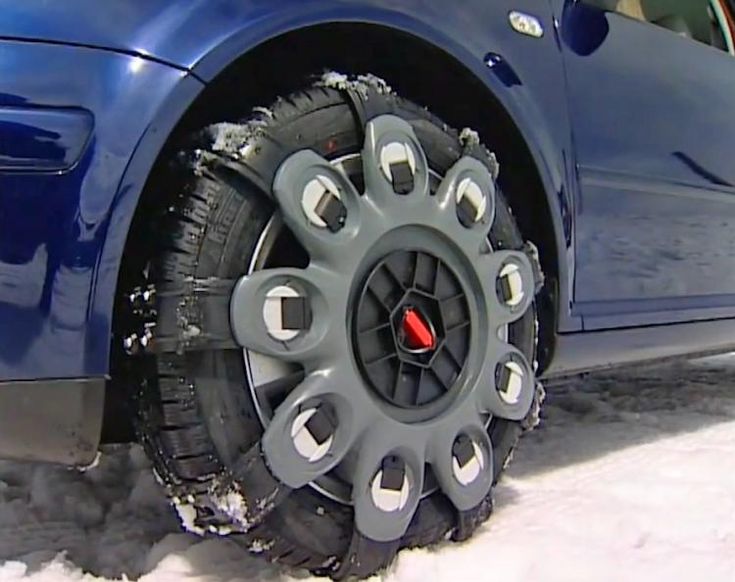 In bad weather, winter tires grip almost like they’re being driven on dry roads, says John DiPiazza, part owner of A&A Tires in Milwaukee. “It’s quite amazing,” he says.
In bad weather, winter tires grip almost like they’re being driven on dry roads, says John DiPiazza, part owner of A&A Tires in Milwaukee. “It’s quite amazing,” he says.
Read the reviews: If you decide to go with all-season tires, make sure you read test reports and consumer ratings. All-season tires vary wildly in their ability to grip snow, says Rogers, whose store also does tire testing. “The gap from good to bad is staggering,” he says. DiPiazza says you should stick to well-known brands for the best performance. If you choose winter tires, also read reviews. Tire Rack’s tests show less of a variance between snow tires from different brands. Deeper grooves generally mean more snow traction, but you can’t always tell performance from looking at a tire, Petersen says. Although winter tires have improved, they still compromise dry-pavement handling for snow and ice performance.
Replace all four tires: Putting snow tires on just the two drive wheels can make your car difficult to handle in snow and ice.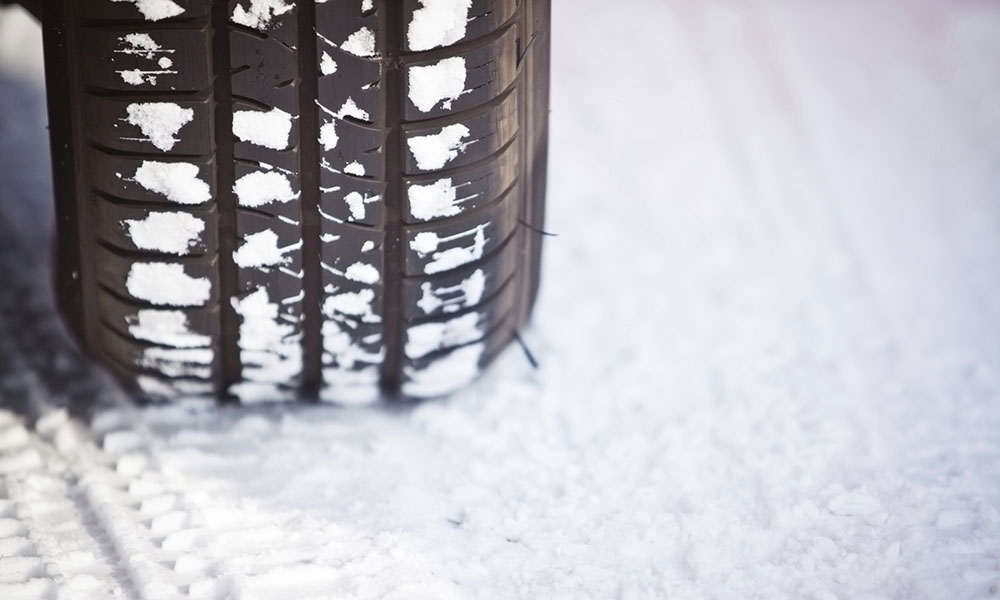 When two wheels on one axle grip better than the other two, it creates a handling imbalance that could be treacherous if you’re trying to stop quickly or steer around something. “Those are the situations where you need your car to work best, an emergency situation,” says Rogers.
When two wheels on one axle grip better than the other two, it creates a handling imbalance that could be treacherous if you’re trying to stop quickly or steer around something. “Those are the situations where you need your car to work best, an emergency situation,” says Rogers.
The price: Snow and all-season tires generally cost about the same. Consumer Reports found that sedan tires average around $145 each. SUV tires average $178 apiece. Shopping around could get you a better deal. Make sure the price includes mounting and balancing.
Buy early: Experts say now is the time to buy, when there’s time to do research and there’s an abundant selection of snow or all-season tires. If you wait until the first snowfall, you might get stuck with what the dealer has on hand in the size that fits your car. But don’t buy too soon: DiPiazza recommends installing winter tires when the daily high temperature is generally below 50 degrees.
It doesn't matter if it's summer, winter or all-season tires: tread depth is extremely important. To confirm this statement and determine what the minimum tread depth is, ADAC experts tested winter tires in size 185/60 R14 in new condition and with different tread depths.
To confirm this statement and determine what the minimum tread depth is, ADAC experts tested winter tires in size 185/60 R14 in new condition and with different tread depths.
It is a well-known standard that the minimum tread depth for passenger car tires in Europe is set at 1.6 mm to ensure road safety.
But ADAC's extensive testing has proven that the legally defined profile depth limit only describes a margin of safety. For summer tires, the profile must have a depth of at least three millimeters, and at least four millimeters for winter and all-season tires. Less depth will be critical on wet roads, snow or slush.
The legal situation is clear: when your car tires (usually eight to nine millimeters tread depth when purchased) have worn down to the minimum allowable mark of 1.6 mm, they become more unusable and must be replaced.
However, in some European countries, such as Austria, winter tires with a tread depth of less than four millimeters are considered summer tires and are even allowed to be driven on certain routes in winter.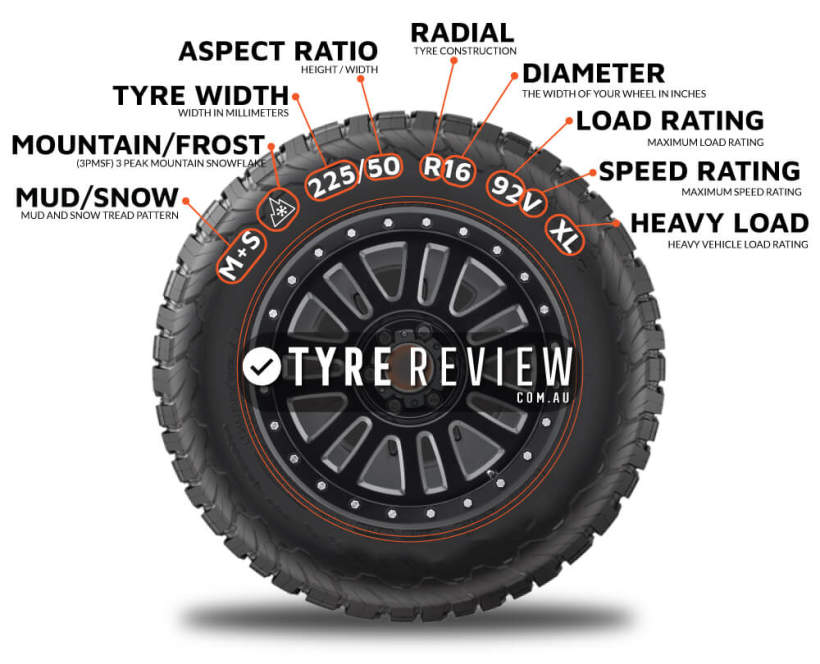
Check the tire tread depth several times a year for your own safety, and remember that the minimum tread depth of 1.6 mm is strictly legal. For safe driving, tires should be changed from a tread depth of 3 or 4 mm.
In order to find out what effect a small tire tread depth has on tire performance, the ADAC test team tested 185/60 R14 winter tires in new condition (profile depth of about 8 mm), as well as worn with 7.5 and 4 mm tread depth.
On snow, the differences between new and used tires were most pronounced. The braking distance of tires with a profile depth of 4 mm was already 3.2 meters longer at a speed of 30 km/h than with new tires.
Even more dramatic were the differences in traction when the tires needed good grip at launch or on inclines. The traction force depends on the depth of the sipes: the tread grooves "capture" loose snow, and the edges of the sipes adhere to a harder surface.
Here, even the 7.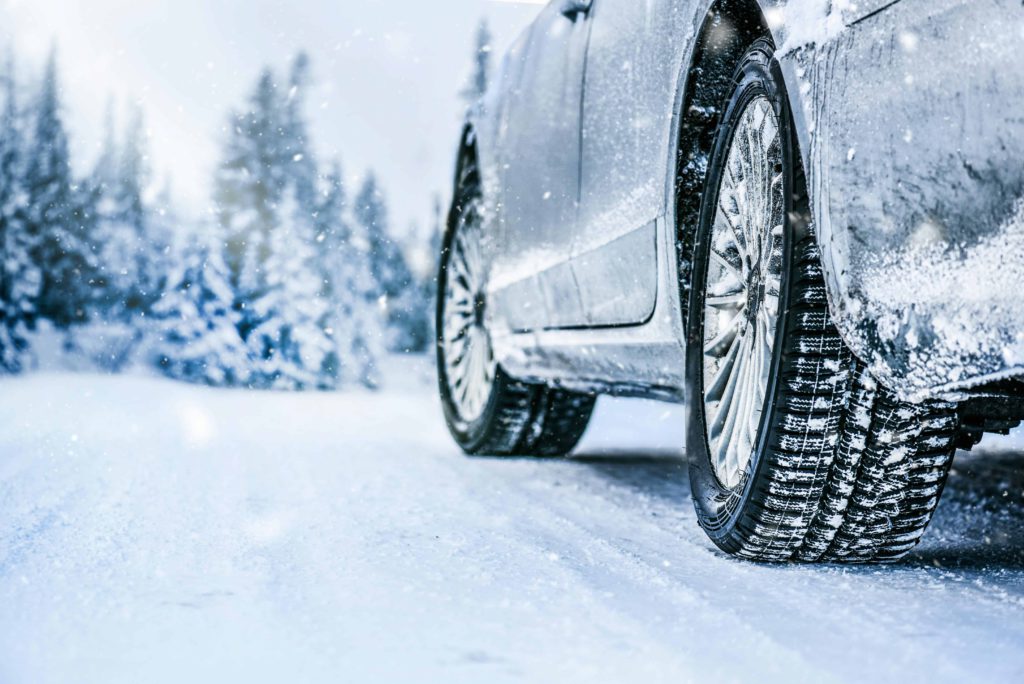 5 mm residual tread option can only gain 60% of the traction compared to the new tire, notes a Shina.Guide technician. Tires with a tread depth of 4 mm do not even reach half the result of new winter tires. What can we say about tires with a legally fixed minimum tread depth of 1.6 mm, which simply have nothing to row snow with.
5 mm residual tread option can only gain 60% of the traction compared to the new tire, notes a Shina.Guide technician. Tires with a tread depth of 4 mm do not even reach half the result of new winter tires. What can we say about tires with a legally fixed minimum tread depth of 1.6 mm, which simply have nothing to row snow with.
During the test, the ADAC testers tried, among other things, to evaluate the traction of summer tires on snow, but the most they could show was a quarter of the traction of a new winter tire and more than 7.5 meters of additional braking distance at a speed of 30 km/h .
On wet pavement, it is important to avoid sudden hydroplaning, which means that tires with longitudinal grooves and sipes should absorb and displace as much water as possible.
Tires worn down to 4 mm begin to “float” on the water already at a speed of 63 km/h, while new winter tires do not until the moment when the speedometer needle reaches 87 km/h.
In braking performance from 80 km/h on wet road surfaces, tires with a profile depth of 4 mm lose 7% of the braking distance to the new ones.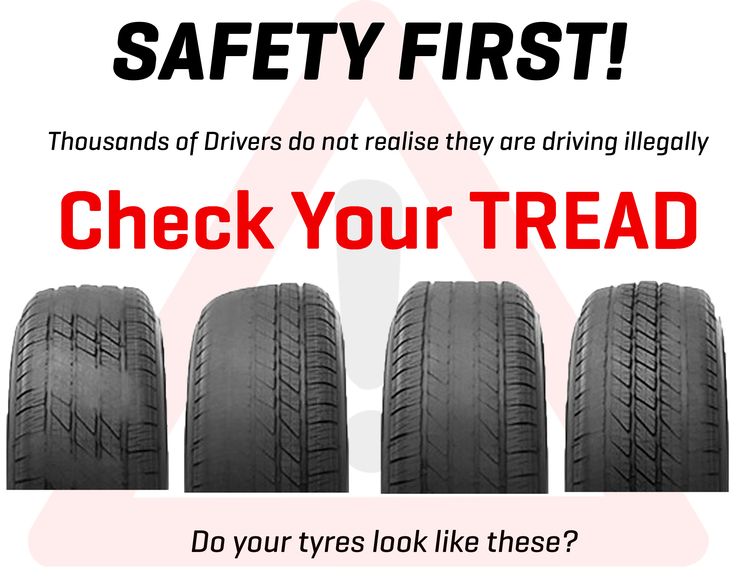
The difference in stopping distance between new and worn winter tires on dry pavement is also present. But the advantage in this matter is on the side of tires with a small residual tread depth. The reason is simple: flattened tread blocks deform less during braking, so more of the tread is in contact with the asphalt. However, dry roads are hardly a frequent occurrence even in countries with mild winter climates, and it turns out that in practice there are no advantages!
Testing with winter tires proves the enormous effect tread depth has on winter tire performance. And this also applies to summer and all-season tires. If you want to be safe, you should change the tires on your car no later than the moment when the minimum tread depth reaches three or four millimeters .
A warning to all motorists: using winter tires in summer is a bad idea. Due to the peculiarities of the tread pattern and the rubber compound, their braking distance is much longer compared to summer tires.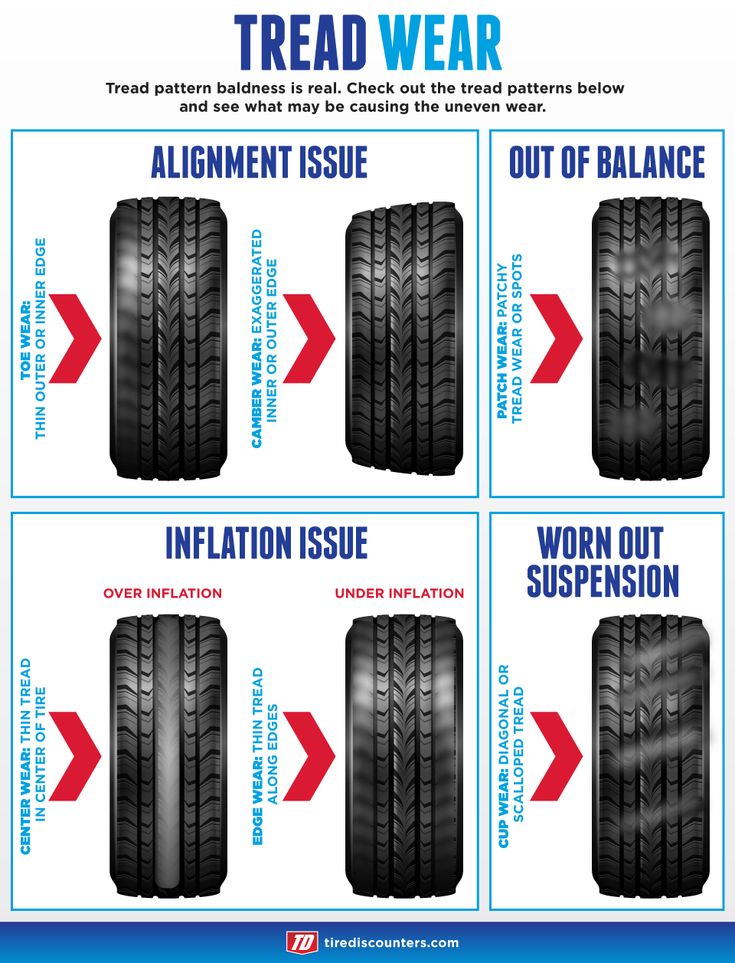
Alexander Alekseev
July 5, 2019
July 5, 2019
One of the most popular questions among motorists in this article will be answered by experts from the General German Automobile Club, better known to us as ADAC.
Whatever tires are used on a car: winter, summer or all-weather, its tread depth is one of the most important factors. It affects most tire performance: handling, aquaplaning, stopping distance under different driving conditions .
To prove this, ADAC tested winter tires in size 185/60 R14. Each set of tires had a different tread depth.
There is a European standard, according to which the minimum depth for safe movement on the roads of passenger cars will be 1. 6 mm.
6 mm.
Tests carried out by ADAC employees have proven that the specified parameter relates more to the safety factor of rubber. As for the depth itself, then for summer tires it should be at least 3 mm, and for winter and all-weather tires - about 4 mm .
Find tires by vehicle or specifying size
As a rule, the tread depth of new car tires is about 8-9 mm. During the operation of rubber, this parameter gradually decreases. As soon as it reaches the 1.6 mm mark, these tires become unusable and must be replaced - this is the legal position in most European countries.
In order to prevent the tire tread depth from falling to a critical level, experts advise constantly monitoring this parameter.
Every driver must remember that a depth of 1.6 mm is only a legal standard. In practice, for safe driving, this figure should be at least 3-4 mm .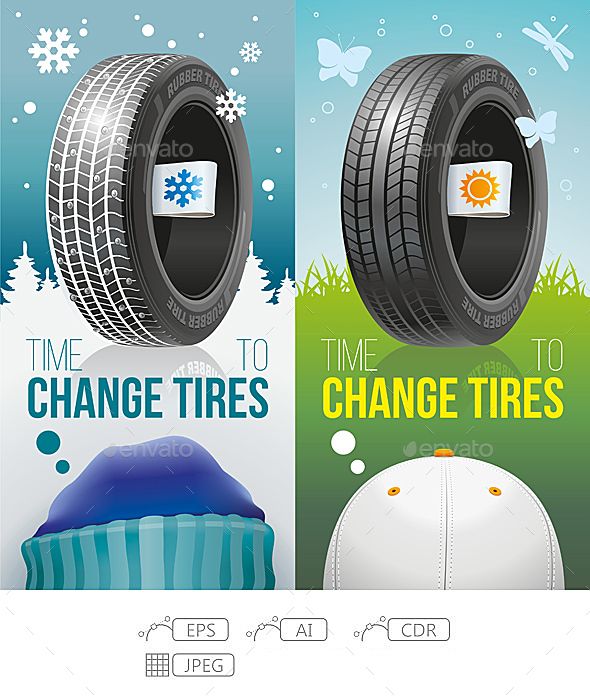
See also: How to choose winter tires for your car - a guide for beginners and more
To demonstrate the effect of tread depth on tire performance, ADAC experts were assisted by a test using 185/60 R14 tires with a depth of 8mm; 7.5 mm and 4 mm.
The specialists of the organization managed to obtain the following performance results ( % ):
The differences in traction are even more noticeable - in this case, tires require high-quality grip at the start and on slopes. The traction parameters depend on the depth of the sipes: during the movement, the grooves located on the tread “capture” the snow. At the same time, the edges of the lamellas adhere to a harder surface.
In tests, even tires with a tread depth of 7.5 mm were found to lose 60% of their traction when compared to new tires.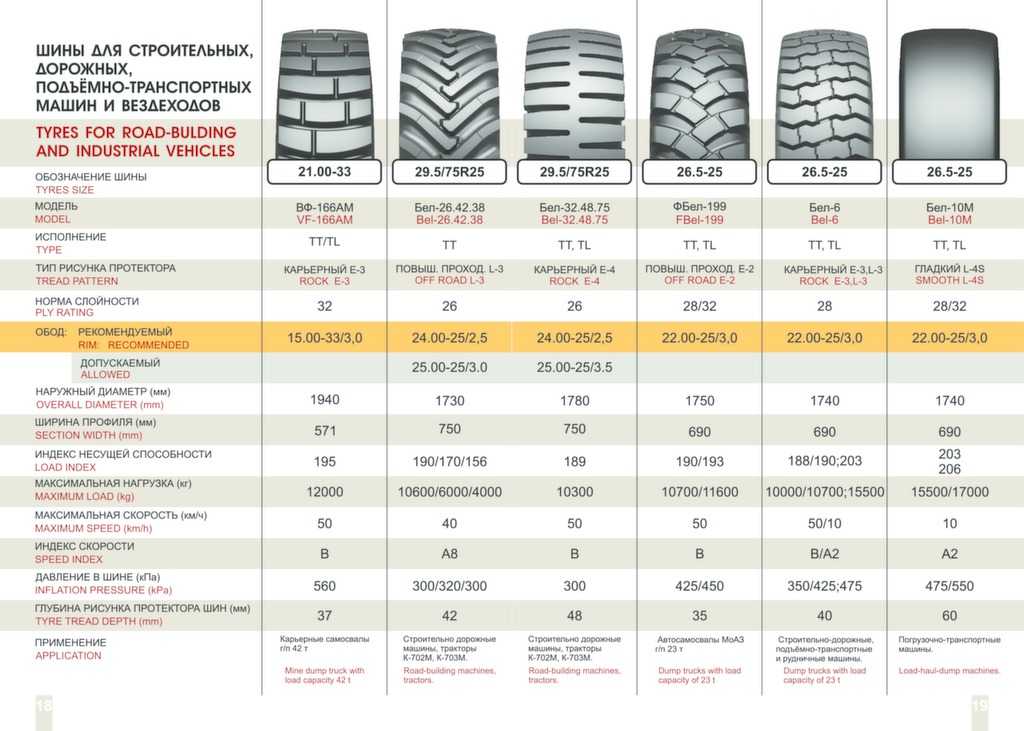 What can we say about rubber with a depth of 4 mm, which frankly does not even reach half of what the new winter tires showed. And if we take into account the legal norm of 1.6 mm, it becomes clear that such rubber will simply have nothing to row snow with.
What can we say about rubber with a depth of 4 mm, which frankly does not even reach half of what the new winter tires showed. And if we take into account the legal norm of 1.6 mm, it becomes clear that such rubber will simply have nothing to row snow with.
Additionally, during the tests, ADAC experts tried to test the traction of summer tires on snow . The maximum that they were able to "squeeze out" was about 25% of the traction force of the new winter tires, and an additional 7.5 m of braking distance when driving at a speed of 30 km/h.
One of the main rules when driving on wet pavement is to avoid sudden hydroplaning. It is necessary to maintain the absorption and removal of a sufficient amount of water by the tires.
During testing by ADAC, it was found that Tires with a tread depth of 4 mm gradually "float up" already at a speed of 63 km/h . At the same time, brand new rubber with a depth of 8 mm does this no earlier than when reaching a speed of 87 km/h.
Braking distance measurements while driving on wet asphalt at a speed of 80 km/h have shown that tires with a tread depth of 4 mm lose more than 7% of the total braking distance obtained to completely new rubber.
See also: Top tires for Ukrainian roads
Tests by ADAC experts have confirmed the difference between the braking performance of tires with different tread depths on completely dry pavement. But, oddly enough, here the advantage goes to the side of rubber with less depth. During operation, their tread blocks are flattened. This results in less deformation during braking and better tire-to-road contact.
However, in practice, it is impossible to meet absolutely dry roads in winter even in regions with a mild climate. Therefore, this cannot be considered an advantage.
AUTOMARKET expert's opinion: Tests by ADAC once again confirmed the importance of controlling the tread depth of rubber.
